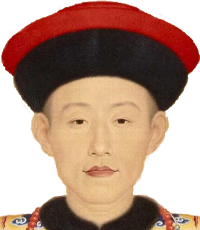The necropolis of the First Emperor
In 1974, peasants digging a well on the outskirts of Xi’an, the capital of the Qin dynasty, came across an unexpected find – a life-size statue, made in terracotta, of an ancient Chinese warrior. The warrior, it turned out, was not alone. Digging further, archaeologists soon unearthed another 2,000 soldiers. Although the excavations have not yet been completed, there are an estimated 8,000 terracotta soldiers buried in the ground. What farmers and archaeologists had come across, it turned out, was the troops guarding the mausoleum of Qin Shi Huang, the First Emperor of China. Or perhaps necropolis, “city of the dead,” is a more appropriate term for this complex of underground palaces and courtyards which house his remains.
The historian Sima Qian, writing one hundred years after the death of the First Emperor, tells us that 700,000 men helped build this site. “Palaces and scenic towers for a hundred officials were constructed, and the tomb was filled with rare artifacts and wonderful treasure.” The necropolis was protected by crossbows and arrows which were set to shoot at anyone who entered, and it was surrounded by rivers of poisonous mercury. The concubines who had not produced male heirs were buried with the emperor and the craftsmen who had constructed the tomb were all trapped inside their creation in order not to give them an opportunity to divulge any of the secrets it contained.
Emperor Qin Shi Huang’s tomb itself has yet to be excavated, and the Chinese authorities have been reluctant to start the work. The reason, it seems, is that archaeologists still are busy unearthing terracotta warriors, and in addition there are concerns regarding how best to protect whatever treasures they will come across. A particularly exciting prospect would be the discovery of a library. As Sima Qian tells us, the First Emperor ordered all books in China to be burned, but it could just possibly be the case that he preserved a copy of each one of them in his personal library. If this library is buried with the emperor, and if it has not been destroyed by over 2,000 years of natural decay, its excavation will give us access to a collection of sources likely to give us an entirely new understanding of ancient Chinese history.
External links:
- Ancient China, "Xian"
- Carrie Gracie, “Sima Qian: China’s ‘grand historian’,” BBC Magazine
- Ian Buruma, "The Earthy Glories of Ancient China," New York Review of Books
- IMDB, “The Emperor and the Assassin,” 1998
- Internet Archive, Books about or by Sima Qian
- Jorge Louis Borges, “The Wall and the Books,” Other Inquisitions
- National Geographic, “Emperor Qin’s Tomb”
- Xian Government, official website

